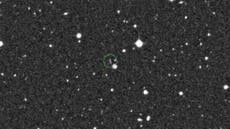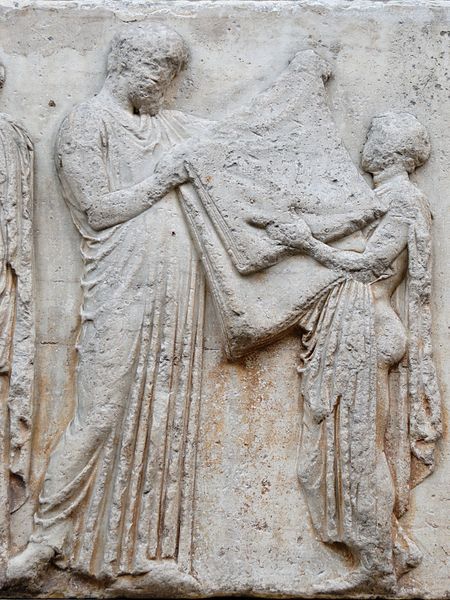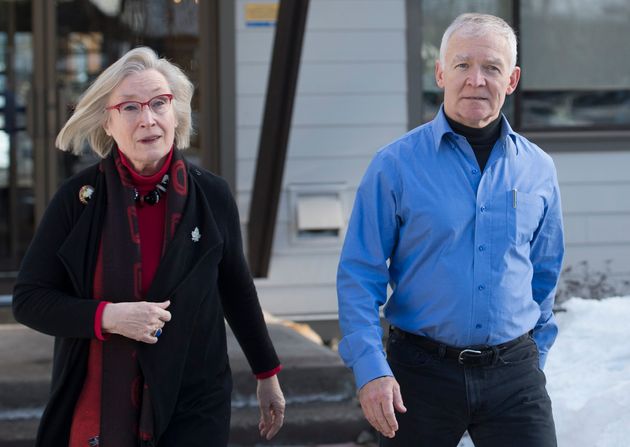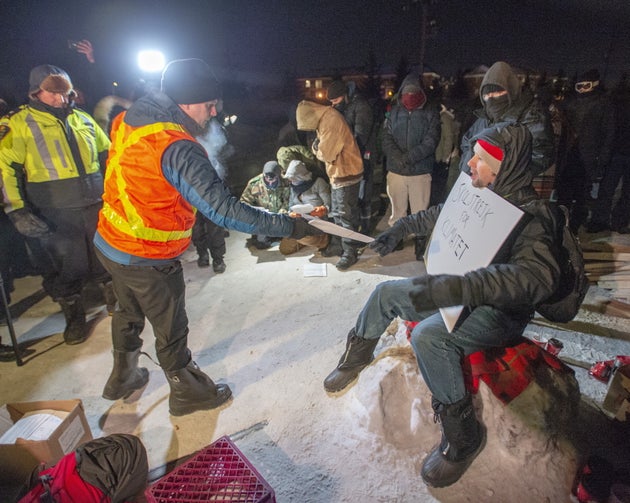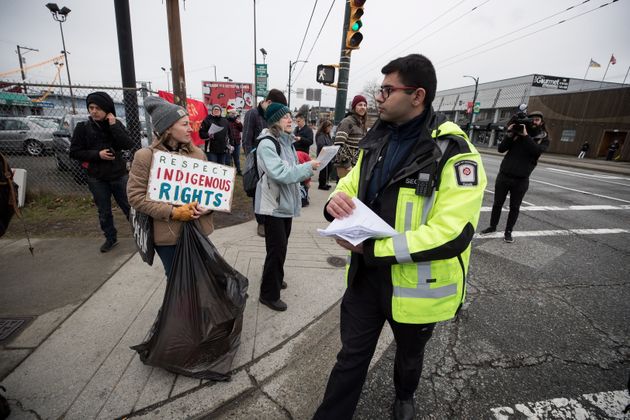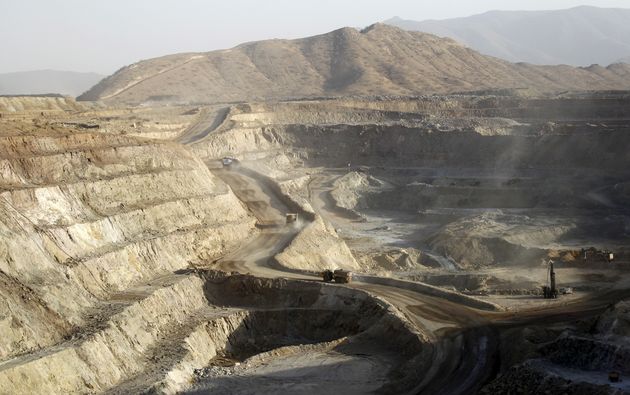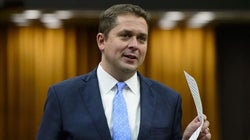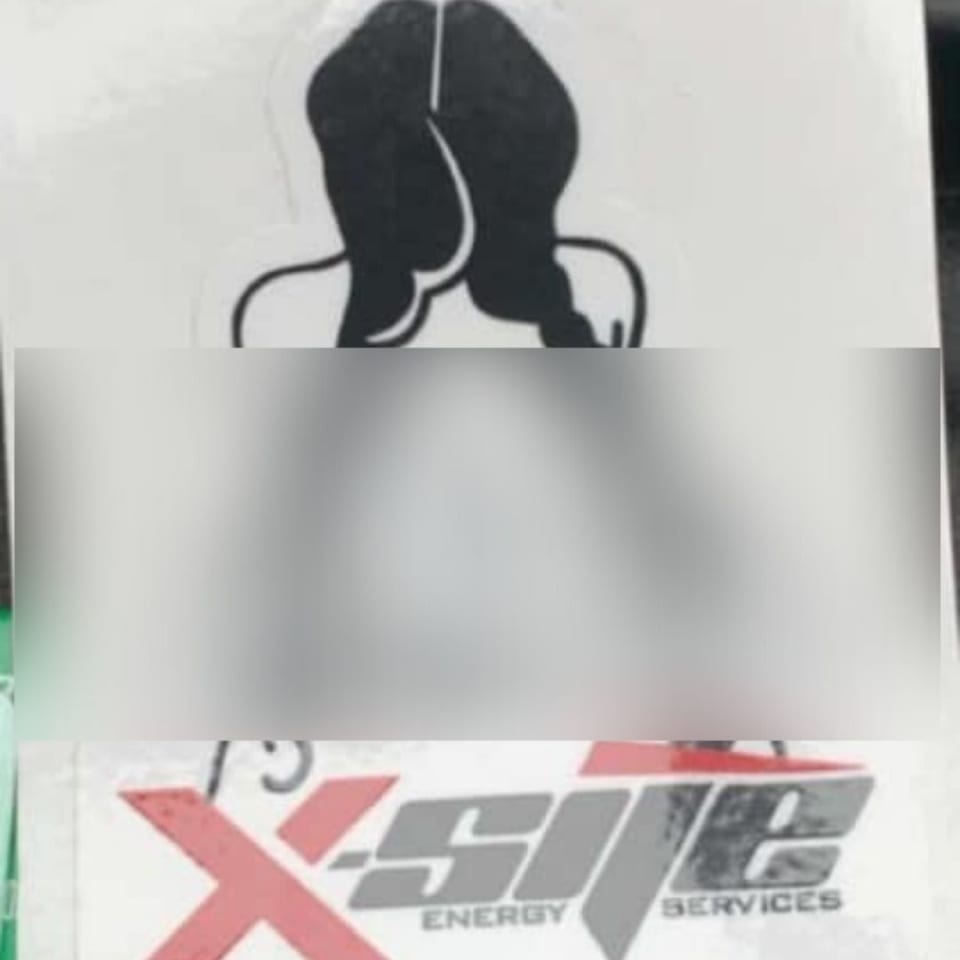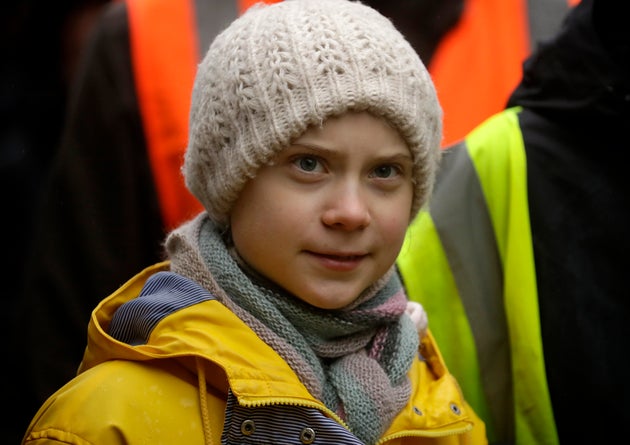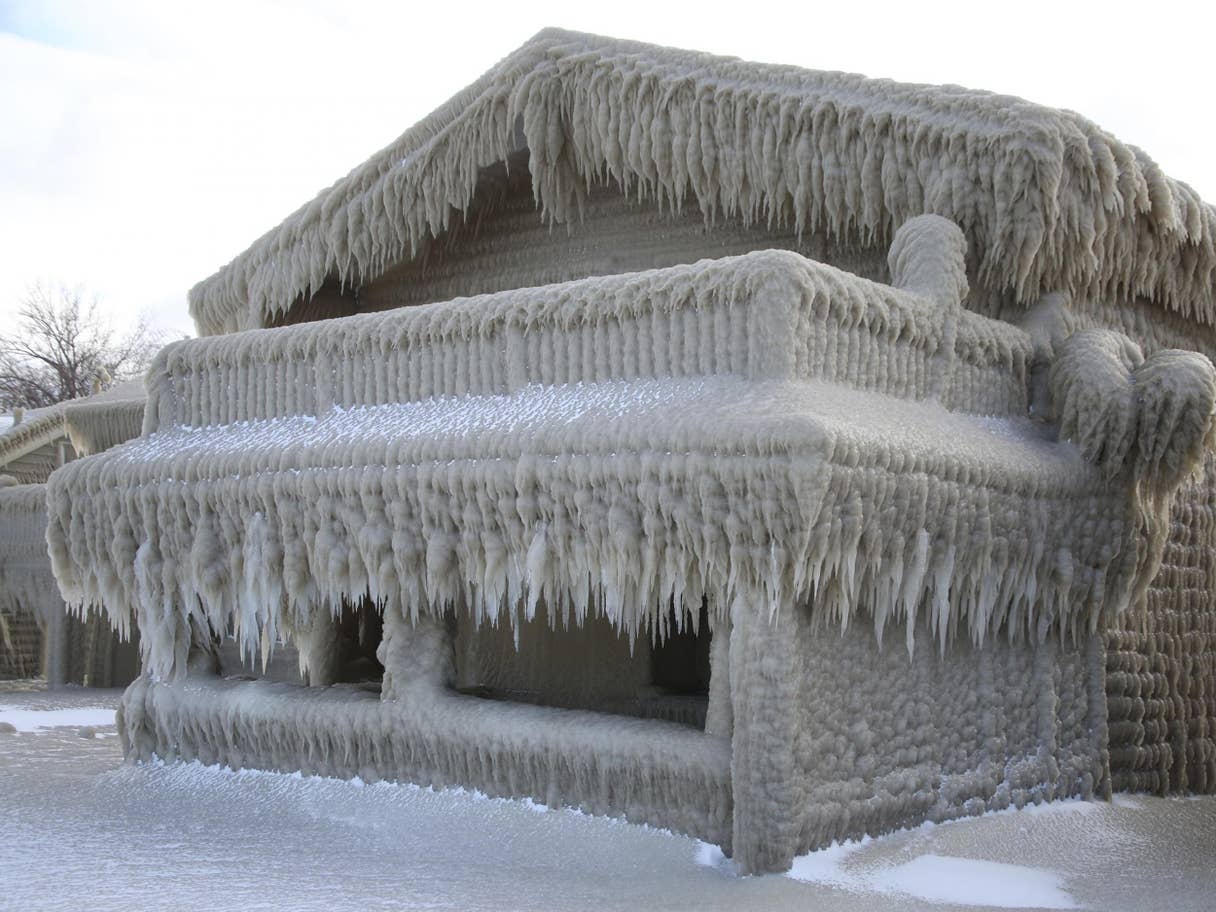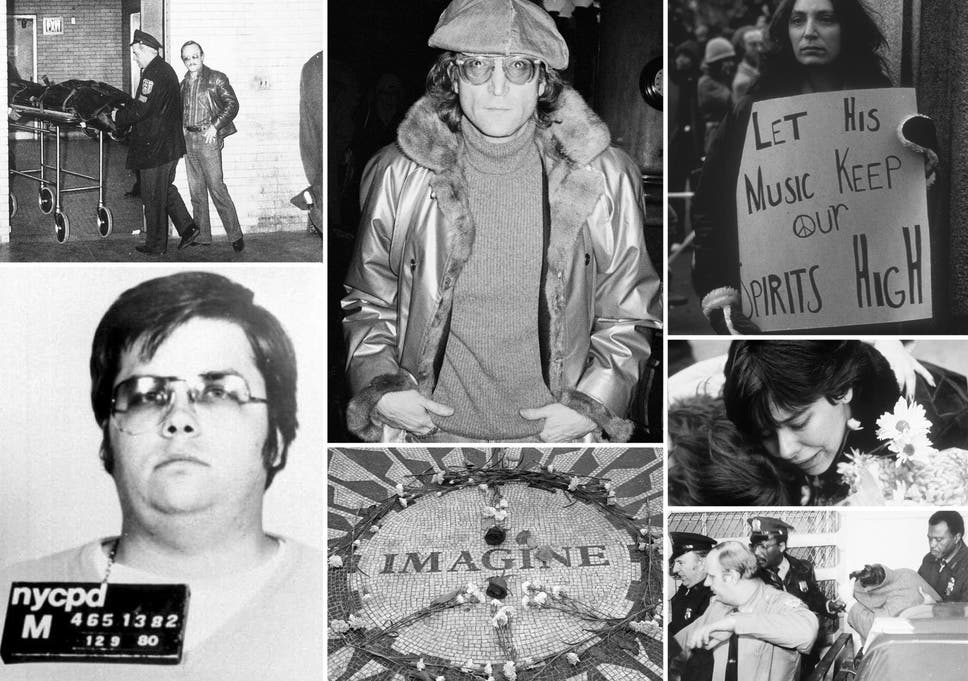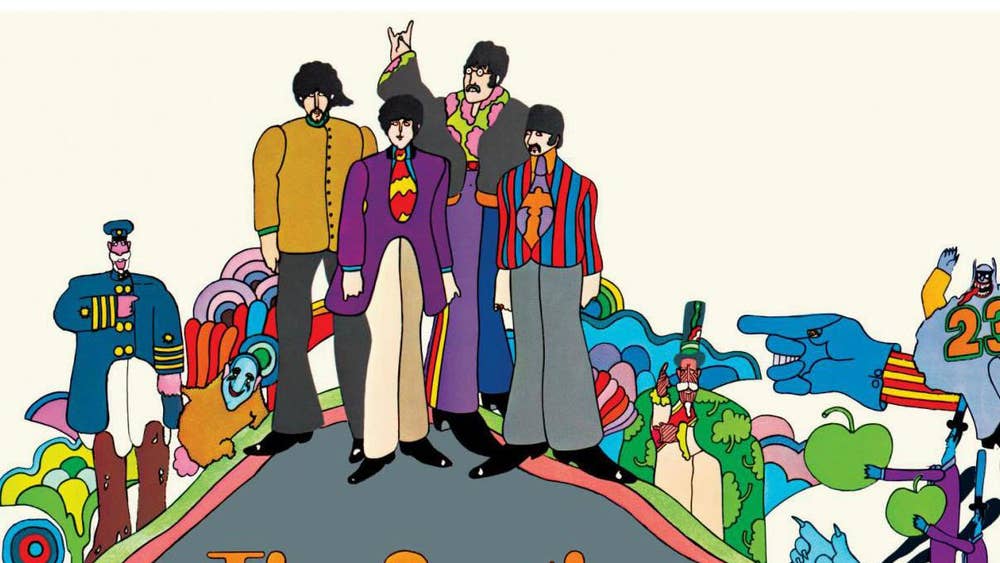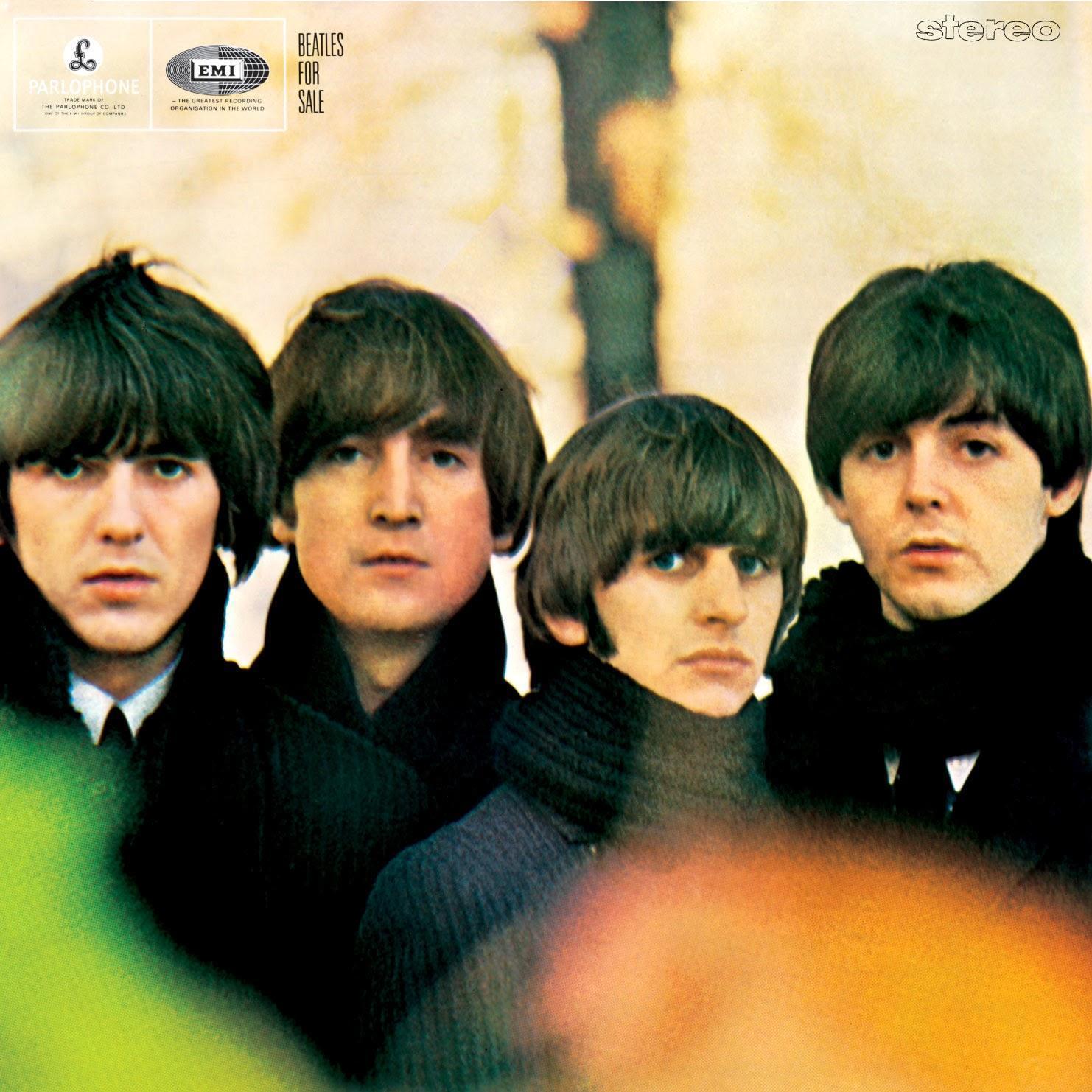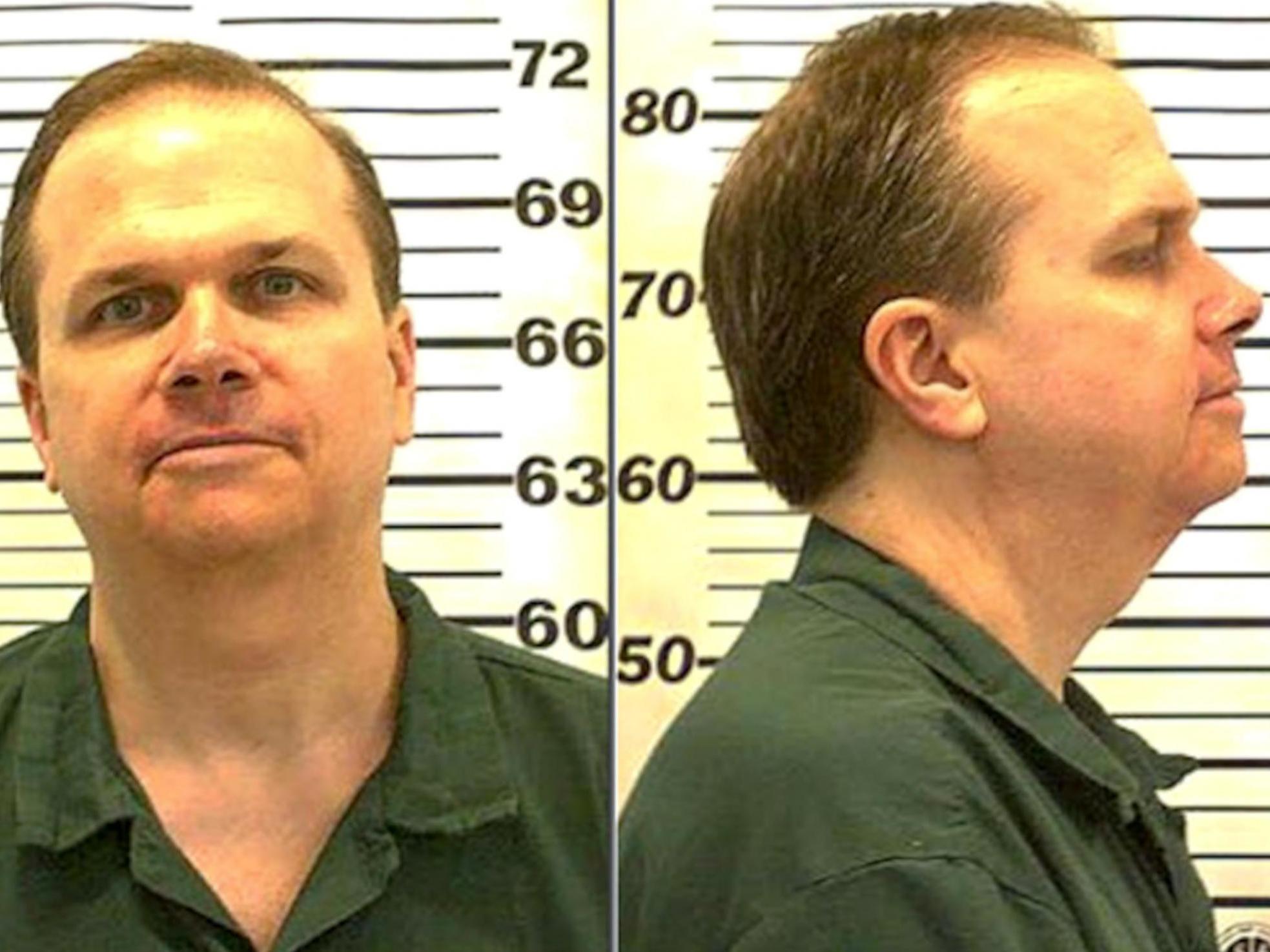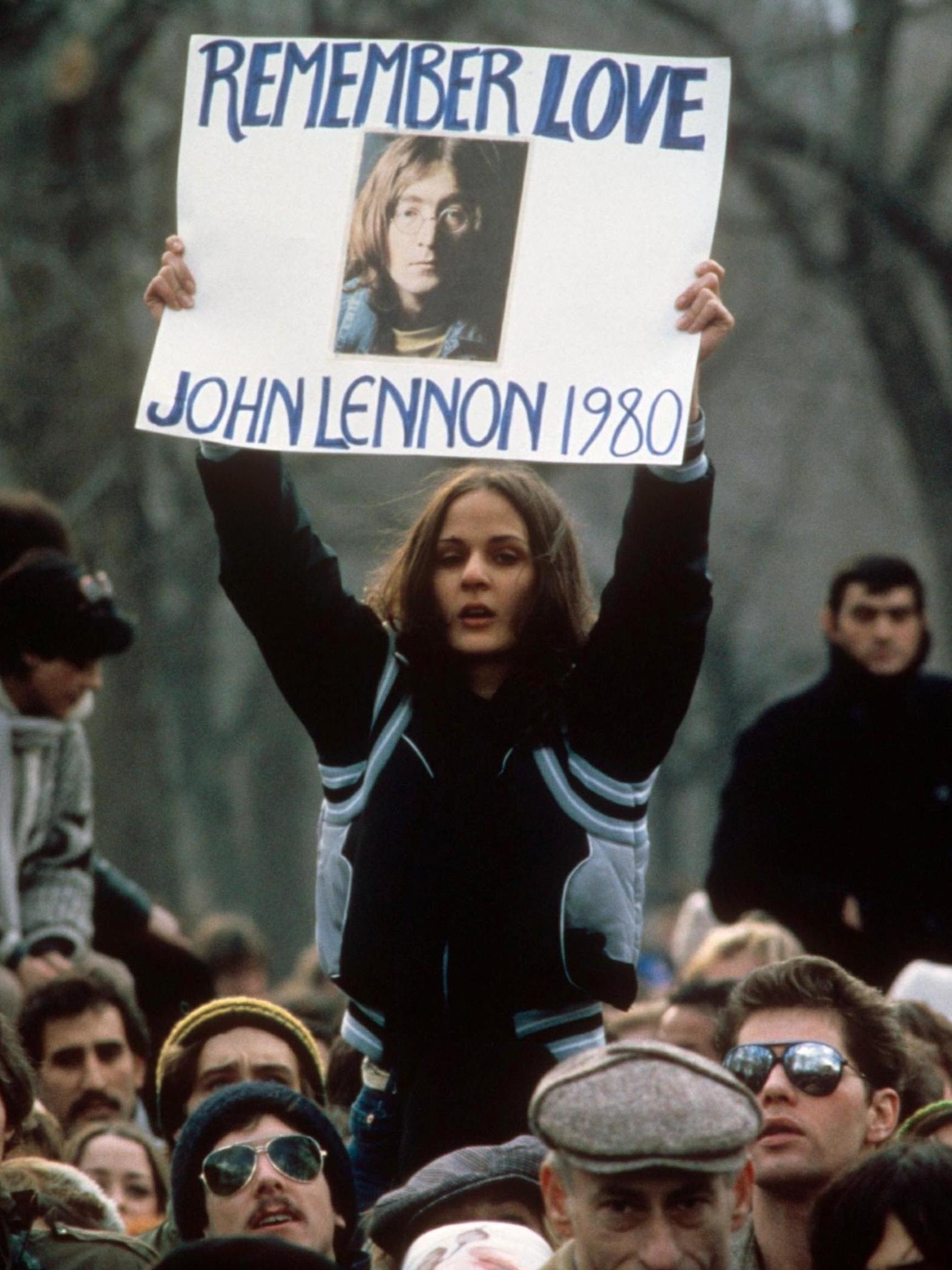‘MYSTERY OBJECT’ IN ORBIT AROUND EARTH SHOWN IN NEW IMAGES
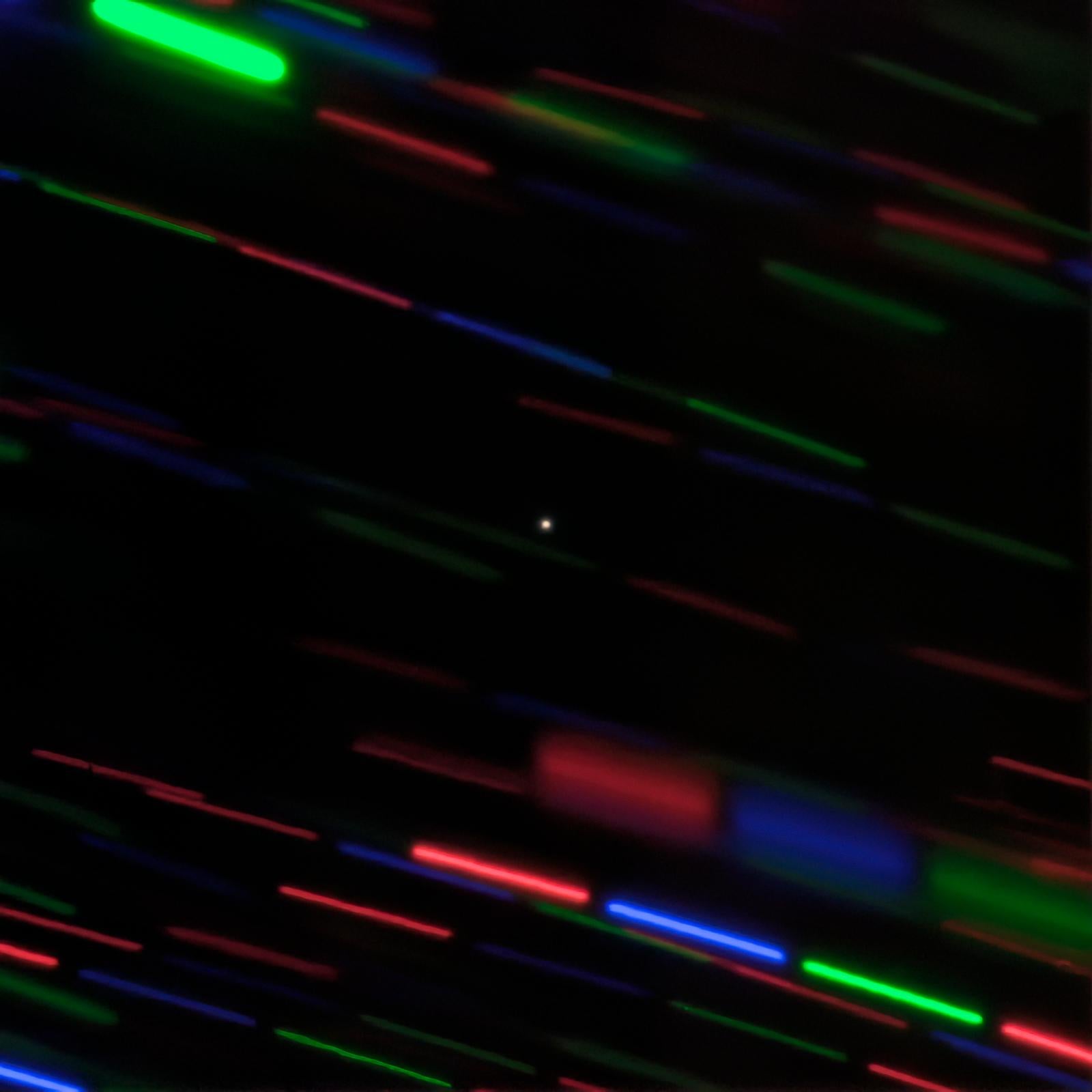
The image was taken on 24 February, soon after 2020 CD3 was first spotted.
Astronomers hope to get more images of the object, in an attempt to learn more about it.
Scientists have released new images of a mysterious object that has joined Earth’s orbit.
The object created excitement earlier this week when it was announced that it appeared to be a new “minimoon” that had arrived in Earth’s orbit.
But scientists say it is too soon to say for sure what the mystery object is and further research is required.
Though it could be the artificial object suggested by other astronomers, it might also be an old satellite, or space debris.
“Either way this is a very compelling object and needs more data to determine what it is,” Grigori Fedorets, the lead astronomer for the observations, said in a statement.
They will look in particular to understand how bright it is shining and how much light it reflects – if it is especially dim, then it is likely to be a rocky body, but if it is shining brighter it is more likely to be a reflective piece of debris, such as a used rocket booster.
The newly discovered satellite will also leave Earth’s orbit, in the coming months, leaving astronomers scrambling to get images of the object and understand its origin.
Earlier this week, the International Astronomical Union’s Minor Planet Center announced the object had been given the designation 2020 CD3.
Many speculated the object was a rocky asteroid, which would make it only the second natural satellite to be spotted around the Earth, other than the Moon. The only other similar object was spotted in 2006 and has since left its orbit around the Earth.
“Obtaining the images was a scramble for the Gemini team because the object is quickly becoming fainter as it moves away from Earth. It is expected to be ejected from Earth’s orbit altogether in April,” said John Blakeslee, head of science at the international Gemini Observatory, which was responsible for the new images.
In the picture, the object can be seen glowing at the centre, with stars streaking across because the telescope was moving to track the object as it moved around the Earth.
‘This is a very compelling object and needs more data to determine what it is,’ lead astronomer says

released new images of a mysterious object that has joined Earth’s orbit.
The object created excitement earlier this week when it was announced that it appeared to be a new “minimoon” that had arrived in Earth’s orbit.
But scientists say it is too soon to say for sure what the mystery object is and further research is required.
Though it could be the artificial object suggested by other astronomers, it might also be an old satellite, or space debris.
“Either way this is a very compelling object and needs more data to determine what it is,” Grigori Fedorets, the lead astronomer for the observations, said in a statement.
Earlier this week, the International Astronomical Union’s Minor Planet Center announced the object had been given the designation 2020 CD3.
Many speculated the object was a rocky asteroid, which would make it only the second natural satellite to be spotted around the Earth, other than the Moon. The only other similar object was spotted in 2006 and has since left its orbit around the Earth.
The newly discovered satellite will also leave Earth’s orbit, in the coming months, leaving astronomers scrambling to get images of the object and understand its origin.
“Obtaining the images was a scramble for the Gemini team because the object is quickly becoming fainter as it moves away from Earth. It is expected to be ejected from Earth’s orbit altogether in April,” said John Blakeslee, head of science at the international Gemini Observatory, which was responsible for the new images.
In the picture, the object can be seen glowing at the centre, with stars streaking across because the telescope was moving to track the object as it moved around the Earth.
The image was taken on 24 February, soon after 2020 CD3 was first spotted.
Astronomers hope to get more images of the object, in an attempt to learn more about it.
They will look in particular to understand how bright it is shining and how much light it reflects – if it is especially dim, then it is likely to be a rocky body, but if it is shining brighter it is more likely to be a reflective piece of debris, such as a used rocket booster.
“Additional observations to refine its position will help us determine this mystery object’s orbit and its possible origin,” he said.
Astronomers expect to find many more such objects as new ways of observing them come online.
The Gemini Observatory is part of the NSF’s National Optical-Infrared Astronomy Research Laboratory, which is currently preparing the Vera C Rubin Observatory, which will scan the sky of seeing yet more similar objects.
“We expect to find a population of these objects once the Rubin Observatory is operational,” said Mr Fedorets in a statement. “Stay tuned!”
IN ANCIENT TORAH TALES PRE OLD TESTAMENT THEN IN LATER GNOSTIC TEXTS THE REGION OF THE ARCHON THE RULER OF THIS WORLD, IS BETWEEN THE EARTH AND MOON AND IN ONE OF THOSE SYNCHRONCITIES, I POSTED A VIDEO

ARCHON
(Greek) Literally, "prince" or "ruler." Esoterically, primordial planetary spirits.
"We have previously stated that the Golden Fleece, the Treasury of the Light, is found within the profundities of oneself. Unquestionably, the Archons of the Fate and the Rulers of the Aeons and those of the Sphere turn to the matter of their refuse. They subdue it, devour it, subjugate it, govern it, and do not let it go to become Souls in the world. This means that they, the Rulers, maintain the elemental Essences in their respective Kingdoms. Such elemental Essences are governed by the Archons. However, while the elemental Essences develop, they pass from one Kingdom to another, according to the Law. Every elemental Essence can convert itself into a human Soul, at its time and hour, and according to the Law. [...] The Archons of the Twelve Aeons, their Lords and their Authorities, their Angels and their Archangels, are represented within ourselves by the distinct autonomous and self-conscious parts of our own Being. The powers of the Rulers of the Aeons, and those of the Fate and those of the Sphere are found within our own Soul."
- Samael Aun Weor, The Gnostic Bible: The Pistis Sophia Unveiled
"...the Archons are the diverse, autonomous and Self-conscious parts of our own Being. [...] The violent judgements of the evil Archons fall upon those who violate the Law. The terms good and evil are very discussable. Something is good when it is suitable for us and evil when it is not suitable for us. Evil Rulers must be understood in esoteric form. No one can enjoy the violent judgements of the Lords of Karma. This is why they are symbolically denominated as evil Archons. We need to be saved from the Archons or violent Rulers of darkness and also from the violent receivers of the outermost darkness."
- Samael Aun Weor, The Gnostic Bible: The Pistis Sophia Unveiled


The Nag Hammadi Library
The Hypostasis of the Archons
(The Reality of the Rulers)
Translated by Bentley Layton
On account of the reality of the authorities, (inspired) by the spirit of the father of truth, the great apostle – referring to the "authorities of the darkness" – told us that "our contest is not against flesh and blood; rather, the authorities of the universe and the spirits of wickedness." I have sent this (to you) because you inquire about the reality of the authorities.
Their chief is blind; because of his power and his ignorance and his arrogance he said, with his power, "It is I who am God; there is none apart from me." When he said this, he sinned against the entirety. And this speech got up to incorruptibility; then there was a voice that came forth from incorruptibility, saying, "You are mistaken, Samael" – which is, "god of the blind."
His thoughts became blind. And, having expelled his power – that is, the blasphemy he had spoken – he pursued it down to chaos and the abyss, his mother, at the instigation of Pistis Sophia. And she established each of his offspring in conformity with its power - after the pattern of the realms that are above, for by starting from the invisible world the visible world was invented.
As incorruptibility looked down into the region of the waters, her image appeared in the waters; and the authorities of the darkness became enamored of her. But they could not lay hold of that image, which had appeared to them in the waters, because of their weakness – since beings that merely possess a soul cannot lay hold of those that possess a spirit – for they were from below, while it was from above. This is the reason why "incorruptibility looked down into the region (etc.)": so that, by the father's will, she might bring the entirety into union with the light.
The rulers laid plans and said, "Come, let us create a man that will be soil from the earth." They modeled their creature as one wholly of the earth. Now the rulers [...] body [...] they have [...] female [...] is [...] with the face of a beast. They had taken some soil from the earth and modeled their man after their body and after the image of God that had appeared to them in the waters. They said, "Come, let us lay hold of it by means of the form that we have modeled, so that it may see its male counterpart [...], and we may seize it with the form that we have modeled" – not understanding the force of God, because of their powerlessness. And he breathed into his face; and the man came to have a soul (and remained) upon the ground many days. But they could not make him arise because of their powerlessness. Like storm winds they persisted (in blowing), that they might try to capture that image, which had appeared to them in the waters. And they did not know the identity of its power.
Now all these things came to pass by the will of the father of the entirety. Afterwards, the spirit saw the soul-endowed man upon the ground. And the spirit came forth from the Adamantine Land; it descended and came to dwell within him, and that man became a living soul. It called his name Adam, since he was found moving upon the ground. A voice came forth from incorruptibility for the assistance of Adam; and the rulers gathered together all the animals of the earth and all the birds of heaven and brought them in to Adam to see what Adam would call them, that he might give a name to each of the birds and all the beasts.
They took Adam and put him the garden, that he might cultivate it and keep watch over it. And the rulers issued a command to him, saying, "From every tree in the garden shall you eat; yet from the tree of recognizing good and evil do not eat, nor touch it; for the day you eat from it, with death you are going to die."
They [...] this. They do not understand what they have said to him; rather, by the father's will, they said this in such a way that he might (in fact) eat, and that Adam might regard them as would a man of an exclusively material nature.
The rulers took counsel with one another and said, "Come, let us cause a deep sleep to fall upon Adam." And he slept. – Now the deep sleep that they "caused to fall upon him, and he slept" is Ignorance. – They opened his side like a living woman. And they built up his side with some flesh in place of her, and Adam came to be endowed only with soul.
And the spirit-endowed woman came to him and spoke with him, saying, "Arise, Adam." And when he saw her, he said, "It is you who have given me life; you will be called 'mother of the living'. – For it is she who is my mother. It is she who is the physician, and the woman, and she who has given birth."
Then the authorities came up to their Adam. And when they saw his female counterpart speaking with him, they became agitated with great agitation; and they became enamored of her. They said to one another, "Come, let us sow our seed in her," and they pursued her. And she laughed at them for their witlessness and their blindness; and in their clutches she became a tree, and left before them her shadowy reflection resembling herself; and they defiled it foully. – And they defiled the stamp of her voice, so that by the form they had modeled, together with their (own) image, they made themselves liable to condemnation.
Then the female spiritual principle came in the snake, the instructor; and it taught them, saying, "What did he say to you? Was it, 'From every tree in the garden shall you eat; yet – from the tree of recognizing good and evil do not eat'?"
The carnal woman said, "Not only did he say 'Do not eat', but even 'Do not touch it; for the day you eat from it, with death you are going to die.'"
And the snake, the instructor, said, "With death you shall not die; for it was out of jealousy that he said this to you. Rather your eyes shall open and you shall come to be like gods, recognizing evil and good." And the female instructing principle was taken away from the snake, and she left it behind, merely a thing of the earth.
And the carnal woman took from the tree and ate; and she gave to her husband as well as herself; and these beings that possessed only a soul, ate. And their imperfection became apparent in their lack of knowledge; and they recognized that they were naked of the spiritual element, and took fig leaves and bound them upon their loins.
Then the chief ruler came; and he said, "Adam! Where are you?" – for he did not understand what had happened. And Adam said, "I heard your voice and was afraid because I was naked; and I hid."
The ruler said, "Why did you hide, unless it is because you have eaten from the tree from which alone I commanded you not to eat? And you have eaten!"
Adam said, "The woman that you gave me, she gave to me and I ate." And the arrogant ruler cursed the woman.
The woman said, "It was the snake that led me astray and I ate." They turned to the snake and cursed its shadowy reflection, [...] powerless, not comprehending that it was a form they themselves had modeled. From that day, the snake came to be under the curse of the authorities; until the all-powerful man was to come, that curse fell upon the snake.
They turned to their Adam and took him and expelled him from the garden along with his wife; for they have no blessing, since they too are beneath the curse. Moreover, they threw mankind into great distraction and into a life of toil, so that their mankind might be occupied by worldly affairs, and might not have the opportunity of being devoted to the holy spirit.
Now afterwards, she bore Cain, their son; and Cain cultivated the land. Thereupon he knew his wife; again becoming pregnant, she bore Abel; and Abel was a herdsman of sheep. Now Cain brought in from the crops of his field, but Abel brought in an offering (from) among his lambs. God looked upon the votive offerings of Abel; but he did not accept the votive offerings of Cain. And carnal Cain pursued Abel, his brother.
And God said to Cain, "Where is Abel, your brother?"
He answered saying, "Am I, then, my brother's keeper?"
God said to Cain, "Listen! The voice of your brother's blood is crying up to me! You have sinned with your mouth. It will return to you: anyone who kills Cain will let loose seven vengeances, and you will exist groaning and trembling upon the earth."
And Adam knew his female counterpart Eve, and she became pregnant, and bore Seth to Adam. And she said, "I have borne another man through God, in place of Abel." Again Eve became pregnant, and she bore Norea. And she said, "He has begotten on me a virgin as an assistance for many generations of mankind." She is the virgin whom the forces did not defile.
Then mankind began to multiply and improve. The rulers took counsel with one another and said, "Come, let us cause a deluge with our hands and obliterate all flesh, from man to beast." But when the ruler of the forces came to know of their decision, he said to Noah, "Make yourself an ark from some wood that does not rot and hide in it - you and your children and the beasts and the birds of heaven from small to large – and set it upon Mount Sir."
Then Norea came to him, wanting to board the ark. And when he would not let her, she blew upon the ark and caused it to be consumed by fire. Again he made the ark, for a second time.
The rulers went to meet her, intending to lead her astray. Their supreme chief said to her, "Your mother Eve came to us." But Norea turned to them and said to them, "It is you who are the rulers of the darkness; you are accursed. And you did not know my mother; instead it was your female counterpart that you knew. For I am not your descendant; rather it is from the world above that I am come."
The arrogant ruler turned, with all his might, and his countenance came to be like (a) black [...]; he said to her presumptuously, "You must render service to us, as did also your mother Eve; for I have been given [...]." But Norea turned, with the might of [...]; and in a loud voice, she cried out up to the holy one, the God of the entirety, "Rescue me from the rulers of unrighteousness and save me from their clutches - forthwith!"
The (great) angel came down from the heavens and said to her, "Why are you crying up to God? Why do you act so boldly towards the holy spirit?"
Norea said, "Who are you?" The rulers of unrighteousness had withdrawn from her.
He said, "It is I who am Eleleth, sagacity, the great angel who stands in the presence of the holy spirit. I have been sent to speak with you and save you from the grasp of the lawless. And I shall teach you about your root."
(Norea apparently now speaking) Now as for that angel, I cannot speak of his power: his appearance is like fine gold and his raiment is like snow. No, truly, my mouth cannot bear to speak of his power and the appearance of his face!
Eleleth, the great angel, spoke to me. "It is I," he said, "who am understanding. I am one of the four light-givers, who stand in the presence of the great invisible spirit. Do you think these rulers have any power over you? None of them can prevail against the root of truth; for on its account he appeared in the final ages; and these authorities will be restrained. And these authorities cannot defile you and that generation; for your abode is in incorruptibility, where the virgin spirit dwells, who is superior to the authorities of chaos and to their universe."
But I said, "Sir, teach me about the faculty of these authorities – how did they come into being, and by what kind of genesis, and of what material, and who created them and their force?"
And the great angel Eleleth, understanding, spoke to me: "Within limitless realms dwells incorruptibility. Sophia, who is called Pistis, wanted to create something, alone without her consort; and her product was a celestial thing. A veil exists between the world above and the realms that are below; and shadow came into being beneath the veil; and that shadow became matter; and that shadow was projected apart. And what she had created became a product in the matter, like an aborted fetus. And it assumed a plastic form molded out of shadow, and became an arrogant beast resembling a lion. It was androgynous, as I have already said, because it was from matter that it derived.
Opening his eyes, he saw a vast quantity of matter without limit; and he became arrogant, saying, "It is I who am God, and there is none other apart from me". When he said this, he sinned against the entirety. And a voice came forth from above the realm of absolute power, saying, "You are mistaken, Samael" – which is, 'god of the blind'.
And he said, "If any other thing exists before me, let it become visible to me!" And immediately Sophia stretched forth her finger and introduced light into matter; and she pursued it down to the region of chaos. And she returned up to her light; once again darkness [...] matter.
This ruler, by being androgynous, made himself a vast realm, an extent without limit. And he contemplated creating offspring for himself, and created for himself seven offspring, androgynous just like their parent. And he said to his offspring, "It is I who am god of the entirety."
And Zoe (Life), the daughter of Pistis Sophia, cried out and said to him, "You are mistaken, Sakla!" – for which the alternative name is Yaltabaoth. She breathed into his face, and her breath became a fiery angel for her; and that angel bound Yaldabaoth and cast him down into Tartaros below the abyss.
Now when his offspring Sabaoth saw the force of that angel, he repented and condemned his father and his mother, matter. He loathed her, but he sang songs of praise up to Sophia and her daughter Zoe. And Sophia and Zoe caught him up and gave him charge of the seventh heaven, below the veil between above and below. And he is called 'God of the forces, Sabaoth', since he is up above the forces of chaos, for Sophia established him.
Now when these (events) had come to pass, he made himself a huge four-faced chariot of cherubim, and infinitely many angels to act as ministers, and also harps and lyres. And Sophia took her daughter Zoe and had her sit upon his right to teach him about the things that exist in the eighth (heaven); and the angel of wrath she placed upon his left. Since that day, his right has been called 'life'; and the left has come to represent the unrighteousness of the realm of absolute power above. It was before your time that they came into being.
Now when Yaldabaoth saw him (Sabaoth) in this great splendor and at this height, he envied him; and the envy became an androgynous product, and this was the origin of envy. And envy engendered death; and death engendered his offspring and gave each of them charge of its heaven; and all the heavens of chaos became full of their multitudes. But it was by the will of the father of the entirety that they all came into being – after the pattern of all the things above – so that the sum of chaos might be attained.
"There, I have taught you about the pattern of the rulers; and the matter in which it was expressed; and their parent; and their universe."
But I said, "Sir, am I also from their matter?"
"You, together with your offspring, are from the primeval father; from above, out of the imperishable light, their souls are come. Thus the authorities cannot approach them, because of the spirit of truth present within them; and all who have become acquainted with this way exist deathless in the midst of dying mankind. Still, that sown element will not become known now. Instead, after three generations it will come to be known, and it has freed them from the bondage of the authorities' error."
Then I said, "Sir, how much longer?"
He said to me, "Until the moment when the true man, within a modeled form, reveals the existence of the spirit of truth, which the father has sent.
Then he will teach them about everything, and he will anoint them with the unction of life eternal, given him from the undominated generation.
Then they will be freed of blind thought, and they will trample underfoot death, which is of the authorities, and they will ascend into the limitless light where this sown element belongs.
Then the authorities will relinquish their ages, and their angels will weep over their destruction, and their demons will lament their death.
Then all the children of the light will be truly acquainted with the truth and their root, and the father of the entirety and the holy spirit. They will all say with a single voice, 'The father's truth is just, and the son presides over the entirety", and from everyone unto the ages of ages, "Holy – holy – holy! Amen!'"
The Reality [Hypostasis] of the Rulers
The Gemini Observatory is part of the NSF’s National Optical-Infrared Astronomy Research Laboratory, which is currently preparing the Vera C Rubin Observatory, which will scan the sky of seeing yet more similar objects.
“We expect to find a population of these objects once the Rubin Observatory is operational,” said Mr Fedorets in a statement. “Stay tuned!”
Earth has a new ‘minimoon’, scientists announce
'BIG NEWS,' tweets astronomer involved in
discovery
Andrew Griffin @_andrew_griffin
2 days ago
Earth has acquired a "minimoon",
scientists have said.
The object has temporarily been captured into
Earth's orbit and is now flying beside us around the solar system, just like
our more famous and much bigger moon, astronomers announced.
It has been designated "2020 CD3" by the
Minor Planet Center, part of the International Astronomical Union, a body that
catalogues and names objects discovered in space.
The object was found by astronomers from the
Catalina Sky Survey in Arizona, on 15 February. It was then observed repeatedly
in the days that followed, allowing astronomers to learn more about the object.
That allowed the astronomers who found it to
gather detailed images of the object as it moves around the Earth.
Examination of the object found that it appears to
be between 6.2 and 11.5 feet in diameter. It is also shining with a particular
brightness suggestive of carbon-rich asteroids, its discoverers said.
Though it was only newly found, the rock is
thought to have been captured into Earth's orbit three years ago. That is
according to orbital simulations carried out by astronomer Tony Dunn, using
data from the astronomers who discovered 2020 CD3.
Official confirmation that the object existed and
had been captured by Earth came on 25 February, when the Minor Planet Center
designated it a "Temporarily Captured Object", and gave it its new
name.
Observations and calculations indicated the object
"is temporarily bound to the Earth", the centre wrote in a circular
sent out to astronomers.
"No evidence of perturbations due to solar
radiation pressure is seen, and no link to a known artificial object has been
found. Further observations and dynamical studies are strongly encouraged.
Despite the vast number of asteroids spotted and
tracked by astronomers, 2020 CD3 is only the second known one ever to orbit
Earth. The first, known as 2006 RH120, was spotted by scientists at the same
institution.
In 2016, an asteroid split in half over Australia
and lit up the sky. Astronomers suggested that may also have been a mini-moon –
and it is possible that others are still orbiting around Earth, too small and
dim to have yet been found by scientists.
but it not likely to be in orbit for long
Earth captures new 'mini moon'

AFP/File / ISHARA S. KODIKARAEarth has captured a 'mini moon'
but it not likely to be in orbit for long
Earth has acquired a second "mini-moon" about the size of a car, according to astronomers who spotted the object circling our planet.
The mass -- roughly 1.9-3.5 meters (6-11 feet) in diameter -- was observed by researchers Kacper Wierzchos and Teddy Pruyne at the NASA-funded Catalina Sky Survey in Arizona on the night of February 15.
"BIG NEWS. Earth has a new temporarily captured object/Possible mini-moon called 2020 CD3," likely to be a C-type asteroid, Wierzchos tweeted on Wednesday.
The astronomer said it was a "big deal" as "this is just the second asteroid known to orbit Earth (after 2006 RH120, which was also discovered by the Catalina Sky Survey)."
Its route suggests it entered Earth's orbit three years ago, he said.
The Smithsonian Astrophysical Observatory's Minor Planet Center, which collects data on minor planets and asteroids, in an announcement said "no link to a known artificial object has been found," implying it was likely an asteroid captured by Earth's gravity.
"Orbit integrations indicate that this object is temporarily bound to the Earth."
Tech entrepreneur Elon Musk said the car-sized object was not the Telsa Roadster he launched into space in 2018, which is now orbiting the Sun.
"It's not mine," he tweeted.
Earth's new neighbor is not in a stable orbit around the planet and is unlikely to be around for very long.
"It is heading away from the Earth-moon system as we speak," Grigori Fedorets, research fellow at Queen's University Belfast in Northern Ireland, told New Scientist magazine, and was likely to escape in April.
The only other asteroid known to orbit Earth, 2006 RH120, rotated the planet from September 2006 to June 2007.
IT'S SATAN
IN ANCIENT TORAH TALES PRE OLD TESTAMENT THEN IN LATER GNOSTIC TEXTS THE REGION OF THE ARCHON THE RULER OF THIS WORLD, IS BETWEEN THE EARTH AND MOON AND IN ONE OF THOSE SYNCHRONCITIES, I POSTED A VIDEO
WHERE A HISTORIAN IS DISCUSSING THE OLD TESTAMENT, GNOSTIC CONCEPTS OF SATAN AND HIS ADVERSARY JESUS SEE THE INVENTION OF THE JESUS

ARCHON
(Greek) Literally, "prince" or "ruler." Esoterically, primordial planetary spirits.
"We have previously stated that the Golden Fleece, the Treasury of the Light, is found within the profundities of oneself. Unquestionably, the Archons of the Fate and the Rulers of the Aeons and those of the Sphere turn to the matter of their refuse. They subdue it, devour it, subjugate it, govern it, and do not let it go to become Souls in the world. This means that they, the Rulers, maintain the elemental Essences in their respective Kingdoms. Such elemental Essences are governed by the Archons. However, while the elemental Essences develop, they pass from one Kingdom to another, according to the Law. Every elemental Essence can convert itself into a human Soul, at its time and hour, and according to the Law. [...] The Archons of the Twelve Aeons, their Lords and their Authorities, their Angels and their Archangels, are represented within ourselves by the distinct autonomous and self-conscious parts of our own Being. The powers of the Rulers of the Aeons, and those of the Fate and those of the Sphere are found within our own Soul."
- Samael Aun Weor, The Gnostic Bible: The Pistis Sophia Unveiled
"...the Archons are the diverse, autonomous and Self-conscious parts of our own Being. [...] The violent judgements of the evil Archons fall upon those who violate the Law. The terms good and evil are very discussable. Something is good when it is suitable for us and evil when it is not suitable for us. Evil Rulers must be understood in esoteric form. No one can enjoy the violent judgements of the Lords of Karma. This is why they are symbolically denominated as evil Archons. We need to be saved from the Archons or violent Rulers of darkness and also from the violent receivers of the outermost darkness."
- Samael Aun Weor, The Gnostic Bible: The Pistis Sophia Unveiled


The Nag Hammadi Library
The Hypostasis of the Archons
(The Reality of the Rulers)
Translated by Bentley Layton
On account of the reality of the authorities, (inspired) by the spirit of the father of truth, the great apostle – referring to the "authorities of the darkness" – told us that "our contest is not against flesh and blood; rather, the authorities of the universe and the spirits of wickedness." I have sent this (to you) because you inquire about the reality of the authorities.
Their chief is blind; because of his power and his ignorance and his arrogance he said, with his power, "It is I who am God; there is none apart from me." When he said this, he sinned against the entirety. And this speech got up to incorruptibility; then there was a voice that came forth from incorruptibility, saying, "You are mistaken, Samael" – which is, "god of the blind."
His thoughts became blind. And, having expelled his power – that is, the blasphemy he had spoken – he pursued it down to chaos and the abyss, his mother, at the instigation of Pistis Sophia. And she established each of his offspring in conformity with its power - after the pattern of the realms that are above, for by starting from the invisible world the visible world was invented.
As incorruptibility looked down into the region of the waters, her image appeared in the waters; and the authorities of the darkness became enamored of her. But they could not lay hold of that image, which had appeared to them in the waters, because of their weakness – since beings that merely possess a soul cannot lay hold of those that possess a spirit – for they were from below, while it was from above. This is the reason why "incorruptibility looked down into the region (etc.)": so that, by the father's will, she might bring the entirety into union with the light.
The rulers laid plans and said, "Come, let us create a man that will be soil from the earth." They modeled their creature as one wholly of the earth. Now the rulers [...] body [...] they have [...] female [...] is [...] with the face of a beast. They had taken some soil from the earth and modeled their man after their body and after the image of God that had appeared to them in the waters. They said, "Come, let us lay hold of it by means of the form that we have modeled, so that it may see its male counterpart [...], and we may seize it with the form that we have modeled" – not understanding the force of God, because of their powerlessness. And he breathed into his face; and the man came to have a soul (and remained) upon the ground many days. But they could not make him arise because of their powerlessness. Like storm winds they persisted (in blowing), that they might try to capture that image, which had appeared to them in the waters. And they did not know the identity of its power.
Now all these things came to pass by the will of the father of the entirety. Afterwards, the spirit saw the soul-endowed man upon the ground. And the spirit came forth from the Adamantine Land; it descended and came to dwell within him, and that man became a living soul. It called his name Adam, since he was found moving upon the ground. A voice came forth from incorruptibility for the assistance of Adam; and the rulers gathered together all the animals of the earth and all the birds of heaven and brought them in to Adam to see what Adam would call them, that he might give a name to each of the birds and all the beasts.
They took Adam and put him the garden, that he might cultivate it and keep watch over it. And the rulers issued a command to him, saying, "From every tree in the garden shall you eat; yet from the tree of recognizing good and evil do not eat, nor touch it; for the day you eat from it, with death you are going to die."
They [...] this. They do not understand what they have said to him; rather, by the father's will, they said this in such a way that he might (in fact) eat, and that Adam might
The rulers took counsel with one another and said, "Come, let us cause a deep sleep to fall upon Adam." And he slept. – Now the deep sleep that they "caused to fall upon him, and he slept" is Ignorance. – They opened his side like a living woman. And they built up his side with some flesh in place of her, and Adam came to be endowed only with soul.
And the spirit-endowed woman came to him and spoke with him, saying, "Arise, Adam." And when he saw her, he said, "It is you who have given me life; you will be called 'mother of the living'. – For it is she who is my mother. It is she who is the physician, and the woman, and she who has given birth."
Then the authorities came up to their Adam. And when they saw his female counterpart speaking with him, they became agitated with great agitation; and they became enamored of her. They said to one another, "Come, let us sow our seed in her," and they pursued her. And she laughed at them for their witlessness and their blindness; and in their clutches she became a tree, and left before them her shadowy reflection resembling herself; and they defiled it foully. – And they defiled the stamp of her voice, so that by the form they had modeled, together with their (own) image, they made themselves liable to condemnation.
Then the female spiritual principle came in the snake, the instructor; and it taught them, saying, "What did he say to you? Was it, 'From every tree in the garden shall you eat; yet – from the tree of recognizing good and evil do not eat'?"
The carnal woman said, "Not only did he say 'Do not eat', but even 'Do not touch it; for the day you eat from it, with death you are going to die.'"
And the snake, the instructor, said, "With death you shall not die; for it was out of jealousy that he said this to you. Rather your eyes shall open and you shall come to be like gods, recognizing evil and good." And the female instructing principle was taken away from the snake, and she left it behind, merely a thing of the earth.
And the carnal woman took from the tree and ate; and she gave to her husband as well as herself; and these beings that possessed only a soul, ate. And their imperfection became apparent in their lack of knowledge; and they recognized that they were naked of the spiritual element, and took fig leaves and bound them upon their loins.
Then the chief ruler came; and he said, "Adam! Where are you?" – for he did not understand what had happened. And Adam said, "I heard your voice and was afraid because I was naked; and I hid."
The ruler said, "Why did you hide, unless it is because you have eaten from the tree from which alone I commanded you not to eat? And you have eaten!"
Adam said, "The woman that you gave me, she gave to me and I ate." And the arrogant ruler cursed the woman.
The woman said, "It was the snake that led me astray and I ate." They turned to the snake and cursed its shadowy reflection, [...] powerless, not comprehending that it was a form they themselves had modeled. From that day, the snake came to be under the curse of the authorities; until the all-powerful man was to come, that curse fell upon the snake.
They turned to their Adam and took him and expelled him from the garden along with his wife; for they have no blessing, since they too are beneath the curse. Moreover, they threw mankind into great distraction and into a life of toil, so that their mankind might be occupied by worldly affairs, and might not have the opportunity of being devoted to the holy spirit.
Now afterwards, she bore Cain, their son; and Cain cultivated the land. Thereupon he knew his wife; again becoming pregnant, she bore Abel; and Abel was a herdsman of sheep. Now Cain brought in from the crops of his field, but Abel brought in an offering (from) among his lambs. God looked upon the votive offerings of Abel; but he did not accept the votive offerings of Cain. And carnal Cain pursued Abel, his brother.
And God said to Cain, "Where is Abel, your brother?"
He answered saying, "Am I, then, my brother's keeper?"
God said to Cain, "Listen! The voice of your brother's blood is crying up to me! You have sinned with your mouth. It will return to you: anyone who kills Cain will let loose seven vengeances, and you will exist groaning and trembling upon the earth."
And Adam knew his female counterpart Eve, and she became pregnant, and bore Seth to Adam. And she said, "I have borne another man through God, in place of Abel." Again Eve became pregnant, and she bore Norea. And she said, "He has begotten on me a virgin as an assistance for many generations of mankind." She is the virgin whom the forces did not defile.
Then mankind began to multiply and improve. The rulers took counsel with one another and said, "Come, let us cause a deluge with our hands and obliterate all flesh, from man to beast." But when the ruler of the forces came to know of their decision, he said to Noah, "Make yourself an ark from some wood that does not rot and hide in it - you and your children and the beasts and the birds of heaven from small to large – and set it upon Mount Sir."
Then Norea came to him, wanting to board the ark. And when he would not let her, she blew upon the ark and caused it to be consumed by fire. Again he made the ark, for a second time.
The rulers went to meet her, intending to lead her astray. Their supreme chief said to her, "Your mother Eve came to us." But Norea turned to them and said to them, "It is you who are the rulers of the darkness; you are accursed. And you did not know my mother; instead it was your female counterpart that you knew. For I am not your descendant; rather it is from the world above that I am come."
The arrogant ruler turned, with all his might, and his countenance came to be like (a) black [...]; he said to her presumptuously, "You must render service to us, as did also your mother Eve; for I have been given [...]." But Norea turned, with the might of [...]; and in a loud voice, she cried out up to the holy one, the God of the entirety, "Rescue me from the rulers of unrighteousness and save me from their clutches - forthwith!"
The (great) angel came down from the heavens and said to her, "Why are you crying up to God? Why do you act so boldly towards the holy spirit?"
Norea said, "Who are you?" The rulers of unrighteousness had withdrawn from her.
He said, "It is I who am Eleleth, sagacity, the great angel who stands in the presence of the holy spirit. I have been sent to speak with you and save you from the grasp of the lawless. And I shall teach you about your root."
(Norea apparently now speaking) Now as for that angel, I cannot speak of his power: his appearance is like fine gold and his raiment is like snow. No, truly, my mouth cannot bear to speak of his power and the appearance of his face!
Eleleth, the great angel, spoke to me. "It is I," he said, "who am understanding. I am one of the four light-givers, who stand in the presence of the great invisible spirit. Do you think these rulers have any power over you? None of them can prevail against the root of truth; for on its account he appeared in the final ages; and these authorities will be restrained. And these authorities cannot defile you and that generation; for your abode is in incorruptibility, where the virgin spirit dwells, who is superior to the authorities of chaos and to their universe."
But I said, "Sir, teach me about the faculty of these authorities – how did they come into being, and by what kind of genesis, and of what material, and who created them and their force?"
And the great angel Eleleth, understanding, spoke to me: "Within limitless realms dwells incorruptibility. Sophia, who is called Pistis, wanted to create something, alone without her consort; and her product was a celestial thing. A veil exists between the world above and the realms that are below; and shadow came into being beneath the veil; and that shadow became matter; and that shadow was projected apart. And what she had created became a product in the matter, like an aborted fetus. And it assumed a plastic form molded out of shadow, and became an arrogant beast resembling a lion. It was androgynous, as I have already said, because it was from matter that it derived.
Opening his eyes, he saw a vast quantity of matter without limit; and he became arrogant, saying, "It is I who am God, and there is none other apart from me". When he said this, he sinned against the entirety. And a voice came forth from above the realm of absolute power, saying, "You are mistaken, Samael" – which is, 'god of the blind'.
And he said, "If any other thing exists before me, let it become visible to me!" And immediately Sophia stretched forth her finger and introduced light into matter; and she pursued it down to the region of chaos. And she returned up to her light; once again darkness [...] matter.
This ruler, by being androgynous, made himself a vast realm, an extent without limit. And he contemplated creating offspring for himself, and created for himself seven offspring, androgynous just like their parent. And he said to his offspring, "It is I who am god of the entirety."
And Zoe (Life), the daughter of Pistis Sophia, cried out and said to him, "You are mistaken, Sakla!" – for which the alternative name is Yaltabaoth. She breathed into his face, and her breath became a fiery angel for her; and that angel bound Yaldabaoth and cast him down into Tartaros below the abyss.
Now when his offspring Sabaoth saw the force of that angel, he repented and condemned his father and his mother, matter. He loathed her, but he sang songs of praise up to Sophia and her daughter Zoe. And Sophia and Zoe caught him up and gave him charge of the seventh heaven, below the veil between above and below. And he is called 'God of the forces, Sabaoth', since he is up above the forces of chaos, for Sophia established him.
Now when these (events) had come to pass, he made himself a huge four-faced chariot of cherubim, and infinitely many angels to act as ministers, and also harps and lyres. And Sophia took her daughter Zoe and had her sit upon his right to teach him about the things that exist in the eighth (heaven); and the angel of wrath she placed upon his left. Since that day, his right has been called 'life'; and the left has come to represent the unrighteousness of the realm of absolute power above. It was before your time that they came into being.
Now when Yaldabaoth saw him (Sabaoth) in this great splendor and at this height, he envied him; and the envy became an androgynous product, and this was the origin of envy. And envy engendered death; and death engendered his offspring and gave each of them charge of its heaven; and all the heavens of chaos became full of their multitudes. But it was by the will of the father of the entirety that they all came into being – after the pattern of all the things above – so that the sum of chaos might be attained.
"There, I have taught you about the pattern of the rulers; and the matter in which it was expressed; and their parent; and their universe."
But I said, "Sir, am I also from their matter?"
"You, together with your offspring, are from the primeval father; from above, out of the imperishable light, their souls are come. Thus the authorities cannot approach them, because of the spirit of truth present within them; and all who have become acquainted with this way exist deathless in the midst of dying mankind. Still, that sown element will not become known now. Instead, after three generations it will come to be known, and it has freed them from the bondage of the authorities' error."
Then I said, "Sir, how much longer?"
He said to me, "Until the moment when the true man, within a modeled form, reveals the existence of the spirit of truth, which the father has sent.
Then he will teach them about everything, and he will anoint them with the unction of life eternal, given him from the undominated generation.
Then they will be freed of blind thought, and they will trample underfoot death, which is of the authorities, and they will ascend into the limitless light where this sown element belongs.
Then the authorities will relinquish their ages, and their angels will weep over their destruction, and their demons will lament their death.
Then all the children of the light will be truly acquainted with the truth and their root, and the father of the entirety and the holy spirit. They will all say with a single voice, 'The father's truth is just, and the son presides over the entirety", and from everyone unto the ages of ages, "Holy – holy – holy! Amen!'"
The Reality [Hypostasis] of the Rulers
By Miguel Conner – Most religions offer a grand cosmic drama, a metaphysical narrative of conflict that filters down to the worldly realms—with the human soul often as the ultimate battleground. The Gnostics had their own spiritual epic, and presented perhaps the most intriguing yet menacing villains in all religious annals: The Archons.
The word “archon” sounds poetic, echoing some sci-fi antagonist perhaps, but the word simply comes from the Greek for “ruler” or “prince,” with a mostly secular connotation. Yet the Apostle Paul in his epistles uses “archon” in a transcendental context (Ephesians 2:2 and Colossians 2:15 are two examples). Through a more esoteric reading, Paul indicates that it was demonic agents, not the Jews or Romans, who were actually responsible for the death of Jesus Christ; and that these very same forces control the universe.
The Gnostics, always the radical innovators and deconstructionists, expanded Paul’s concepts into notion of the Archon (as found in such texts as the Secret Book of John, the Hypostasis of the Archons, and the Gospel of Judas). In fact, they took the notion to terrifying new vistas, proposing that the god of the Old Testament and his angels were nothing but Archons—mighty but flawed deities that managed the cosmos and suppressed the forces of good by drowning existence under waves of ignorance and bureaucracy of all sorts.
The Archons’ main task was to keep the lost sparks of the true divinity, contained in all humans, trapped in the material dimensions in order to fuel their own power (the Gnostic-themed movie The Matrix comes to mind).
The Gnostics (and Paul to an extent) wrote that the only method to defeat the Archons was through Gnosis: that knowledge of one owns God-consciousness, as well as a piercing vision through the false illusions of matter all the way to the Eternal Realm or Treasury of Light (and other names of the place where Sophia, Jesus Christ, and the Alien God dwelled).
The reason the Archons are so horrific is their very nature and purpose. Most religions assume that divine agents manage the universe, and with the Archons this is the case, but with a tragic wrinkle: they happen to be inept and greedy bureaucrats with almost unlimited power. One of the reasons the Archons are so intriguing yet menacing, as mentioned before, is the fact they are truly mundane and ordinary, nothing more than godly administrators draining all worthwhile systems of existence!
One can easily make the case that the narrative of the Archons actually hits closer to home, in ancient or modern sensibilities. After all, we can all relate to the suffocating maze that is a corporation’s customer support or the psychic-erosion of endless government red-tape, and other experiences that seem to slowly submerge consciousness into the mortal states of stupor, numbness, and defeat. On a cosmic level, the Archons are possibly the ultimate agency for oppression.
The concept of the Archons is certainly more approachable than that of traditional demons or evil gods orchestrating punishment in various underworlds. The idea of Hell has certainly lost much credence in modern Christianity. But the idea of bumbling, avaricious, and godlike creatures controlling our lives is something every person can relate to, and it continuously happens in everyday life!
In fact, in the novel Good Omens, written by Terry Pratchett and Neil Gaiman, a demon appropriately named Crowley proves that the Archon-way is superior in the fight against Heaven. He demonstrates that traffic jams and phone service outages are far more efficient in damning souls than such common demonic methods as possession or temptation. Death by a thousand frustrations is the best way to dim the human spirit.
The notion of Archons, beyond literature, has recently become popular in modern Occultism and even in Conspiracy Theory circles. Two main examples are Alex Jones and David Ickes, both who have frequently spoken about the threat of Archons.
Even from a practical theological standpoint, the existence of the Archons makes more sense. Many in modern Occultism like to quote the Gnostic truism of “As above, So Below.” But they assume it only travels one way, just as they forget that in many ancient traditions the world is but a reflection of the higher realms. In other words, if human societies’ are basically mazes of well-intentioned but deficient systems, and that they ultimately smother what is heroic in individuals, then wouldn’t it be the same for the gods who made us partially in their image?
Maybe Paul or the Gnostics never met an Archon, purely speculating on the state of the cosmos, but they felt their enslaving effects. And so has every person who ever lived, whether it was by their soul-diming of filing worthless paperwork or by the grim and scientific realization that the very fabric of the universe is full of pot holes that will never be fixed.
